Guildline Instruments Ltd.
by Victoria JL Fisher
Guildline Instruments Ltd. was founded in Smiths Falls, Ontario, by employees of UK electrical company Tinsley Instruments. In 1952, Tinsley established a manufacturing branch in St Jerôme, Quebec, with a view to selling instruments to the then-burgeoning National Research Council of Canada (NRC).
In 1957, the company closed its St Jerôme plant and moved to Smiths Falls. The reason for this move seems to have multiple factors: By the 1950s, the NRC was shifting resources away from Montreal. The nuclear research laboratories that had been located there until 1946 were moved to Chalk River, Ontario; other facilities were centered on Ottawa. This meant St Jerôme was located far from many of the customers Tinsley had expected. At the same time, many of the specialised Tinsley employees were British, with English-speaking family; St Jerôme is a French-speaking community. In these joint conditions, an anglophone community closer to Ottawa, the Chalk River facility, and half-way between the centres of Toronto and Montreal was doubtless attractive.
It is not clear at what point Tinsley Instruments ceased activities in Canada. Sometime between fall 1960 and summer 1961, the name of the company was changed to Guildline Instruments
Guildline’s business was perhaps the opposite of what Tinsley had expected. Instead of selling instruments to the NRC, when the company’s employees met with NRC scientists, they perceived an opportunity to develop and commercialise new instruments that had been developed by scientists at the NRC.
In the 1960s and 1970s, this is what the company did. The Autosal 8400 salinometer, an instrument for measuring the saltiness of seawater, was developed by an NRC physicist and oceanographer, Thomas “Tim” M. Dauphinee and his colleagues. Working by comparing the electrical conductivity of a seawater sample to a control, it marked a major step forward in the simple and precise measurement and monitoring of ocean salinity, allowing for automated measurements to be made in the field— “in small boats and out-of-the-way places, and small sample size, while retaining good accuracy.” (Dauphinee et al 1983, 291)
This particular example, made 1973, is a prototype that was tested at the Bedford Institute of Oceanography, an NRC facility located in Dartmouth, Nova Scotia. By 1983, the inventors of the instrument described the Guildline Autosal as “the standard instrument in many, if not most, oceanographic laboratories around the world.” (Dauphinee et al 1983, 288) This instrument therefore speaks to the importance of this relationship, and the role manufacturers play in both the initial development and commercialisation of new instrument.
The Autosal salinometer, alongside a portable version, the “Portasal”, is still for sale from Guildline today, and plays a crucial role in oceanographic research.
Timeline
May 1952 – UK company Tinsley Instruments opens a manufacturing branch in St Jérôme, Quebec
1957 – Tinsley Instruments plant closes in St Jerome and plans to move to Smiths Falls, Ontario
1958 – Tinsley Instruments active at Churchill Crescent, Smiths Falls
1960-July 1961 – Name of Smiths Falls company changed to Guildline Instruments (The Globe and Mail, July 13, 1961, pg 36)
1960s – Guildline manufacturing instruments based on principles of the direct current comparator developed and prototyped by the National Research Council of Canada. (“Guildline Instruments Celebrates 40 Years”)
2023 – Guildline is still active in Smiths Falls, Ontario.
Sources
Doyle-Bourgeois, Dick. “Dr. Thomas M. “Tim” Dauphinee (1916-2017)” (https://science.gc.ca/site/science/en/blogs/older-blogs/science-mutters-2019/dr-thomas-m-tim-dauphinee-1916-2017 [07/11/23])
Dauphinee, Thomas M., Kirby, Christopher G.M. “Salinometer” Patent CA1199367 (A) (1986-01-14)
Dauphinee, Thomas M. “Tim”, Klein, H. Peter, Kirby, Chris G.M., Kathnelson, Jerry “A Portable Salinometer Based on Direct Measurement of the Conductivity Ratio Rt” IEEE Journal of Oceanic Engineering Vol. OE-8 No 4 (October 1983): 288-292
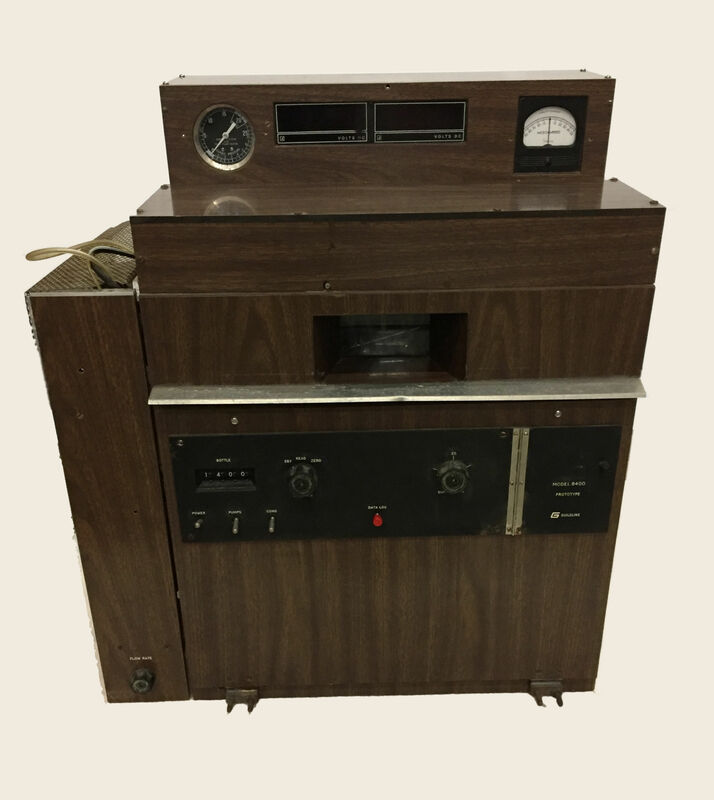
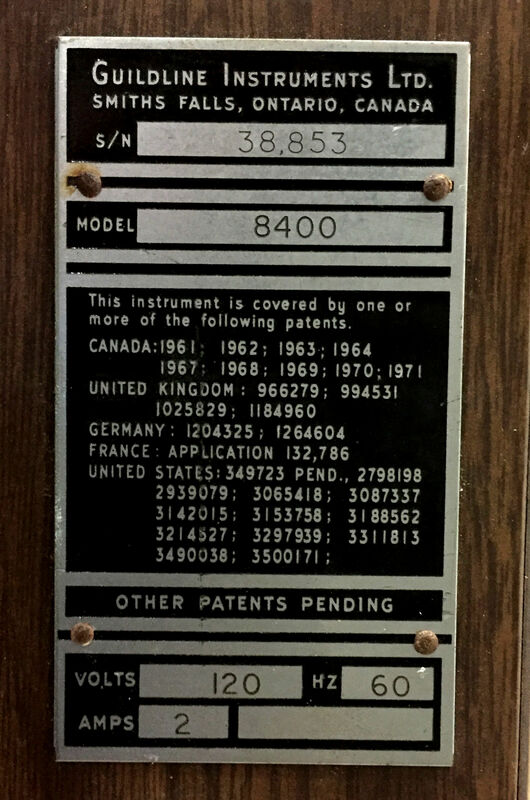
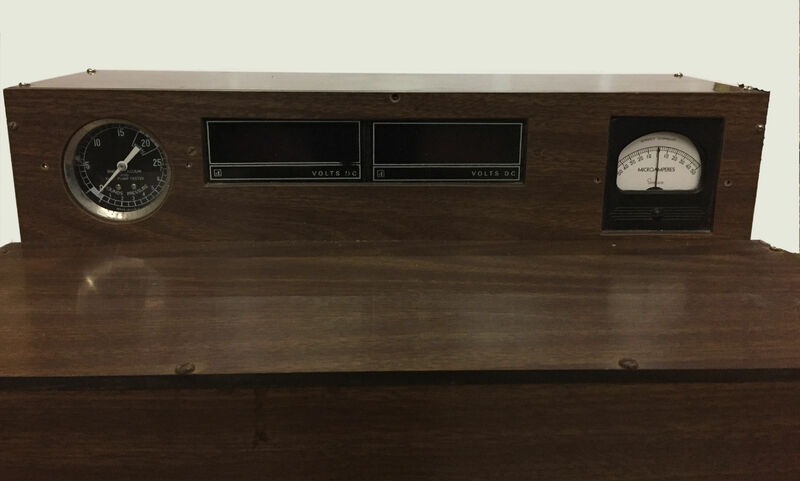
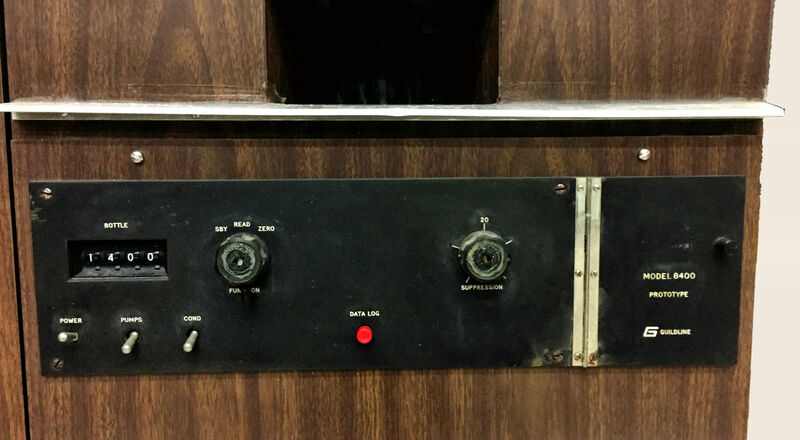
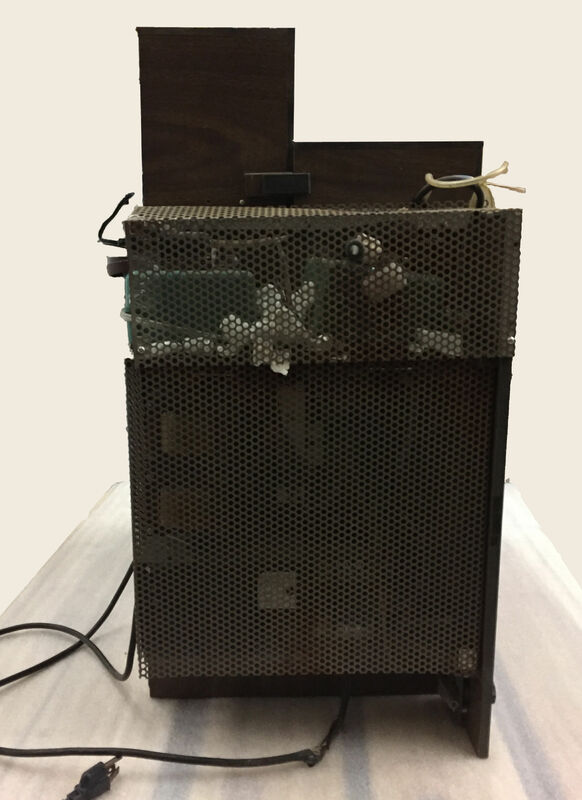
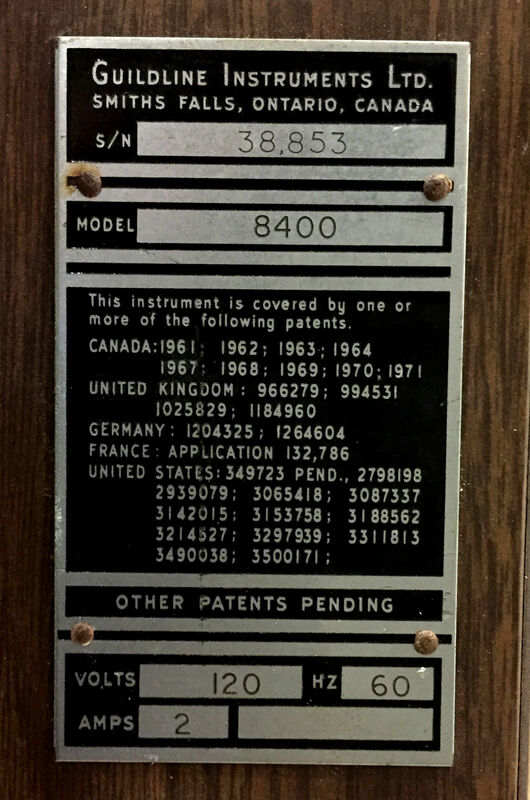
 Autosal 8400 Salinometer
Autosal 8400 Salinometer Guildline Instruments Ltd.
Guildline Instruments Ltd.